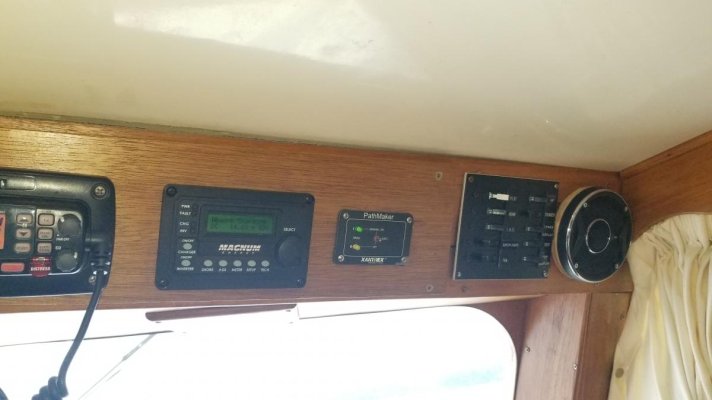Not necessarily. Think about ALL your charging sources when you think about the ACR, and what about when you are using alternators or, if you have it (or in the future) solar.
Typically, what you find is your house bank regularly needs the most charge amps and that is what your charging sources should be hooked to. The start batteries, while using a LOT of amps, use them for a short period of time and need relatively little charging.
Usually, the ACR is a preferred way to go in "modern times". There are some who are advocating that newer battery isolators can do the job because their techonology has caught up (older battery isolators used diodes that consumed a LOT of power.)
Check out Pacific Yacht Systems youtube videos
https://www.youtube.com/user/PacificYachtSystems/videos and look for both ACR and isolator videos.
On NWD, we have a large start battery connected only to the twin lehmans. The start battery cannot power ANYTHING else on the boat (unless connected manually to the house batteries as described below.)
We have a very large (800 Ah in lead acid GC2 batteries) battery bank that our charging sources are connected to (alternators, AC charger, and soon the solar.) This puts all of the charging directly into the battery bank that always needs the most amps.
We also have a third battery, an independent start battery for our genset. It cannot be manually connected to any other battery. We could, in a pinch, manually remove it, and manually connect it to the engines to attempt to start them.
We have a ACR than connects the start bank to the house bank whenever enough charge voltage is present to charge. Our genset start battery is connected to the engine start by an echocharger, which is a low current version of an ACR.
The ACR and echocharger are all automatic, and activate when there is sufficient charge voltage. Both have smart profiles. We have no 1/2/both switches on board.
Our ACR allows us a manual (switched) cross connect to connect the house and start batteries in case of a start battery drain/failure. In case of an ACR failure AND a start battery failure, I would have to physically jump a connection between the ACR (about 4 inches apart.
In the engine room: this is an old photo. Ignore the breaker attached directly to the ACR, this was removed and properly routed... You can see half of the Echocharger to the left of the Xantrex ACR. The Echocharge exists to keep the genset battery charged / topped off / floated.

Our lower helm overhead panel: Roughly center is the control panel for the Xantrex ACR. It shows green when charging voltage is present and the house/start batteries are connected for charging. It has a manual switch for me to manually connect the house and start batteries in the event of a dead start battery. There is a second manual switch on the ACR itself in the engine room.

I don't know that I have the most advanced/best charging system. It may be that a more modern (like the modern Victron isolator) system would be better, but the concept is the same - the charging systems ALL input to one point, and charge the batteries to a common distribution, whether it is an ACR or a modern efficient (no diode loss) isolator.
All I know is this - I have a monitor for all three of my battery systems. I have no switches to regulate charging. I have no issues with them being automatically charged.
my 2c. FYI I inherited this system from my PO, and have only upgraded the size of my house bank, cleaned up the installation, and verified what I know about it. I've added a missing fuse at the hose bank, and am adding a house bank remote shut off switch.


